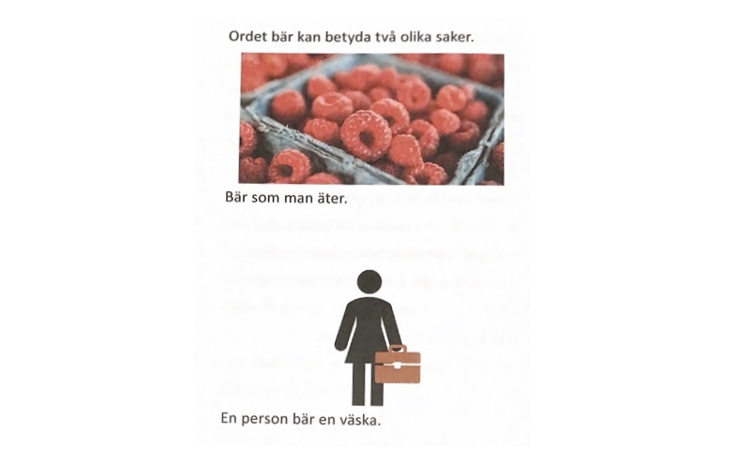
ΑΙhub.org
Better images of AI can support AI literacy for more people

By Marika Jonsson
Marika Jonsson, doctoral student at KTH Royal Institute of Technology, reflects on overcoming the challenge of developing an Easy Read book on artificial intelligence (AI) with so few informative images about AI available.
There are many things that I take for granted. One of them is that I should be able to easily find information about things I want to know more about. Like artificial intelligence (AI). I find AI exciting, interesting; and I see the possibilities of AI helping me in everyday life. And thanks to the fact that I have been able to read about AI, I have also realised that AI can be used for bad things; that AI creates risks and can promote inequality in society. Most of us use or are exposed to AI daily, sometimes without being aware of it.
Between May 2020 and June 2023, I participated in a project called AllAgeHub in Sweden, where one of the aims was to spread knowledge about how to use welfare technology to empower people in their everyday lives. The project included a course on AI for the participants, who worked in the public healthcare and social care sectors. The participants then wanted to spread knowledge about AI to clients in their respective sectors. The clients could be, for example, people working in adapted workplaces or living in supported housing. There was a demand for information in Easy Read format. Easy Read format is when you write in easy-to-read language, with common words, short sentences and in simple chronological order. The text should be spaced out and have short lines, and the texts are often supported by images. Easy Read is both about how you write and about how you present what is written. The only problem was that I found almost no Easy Read information about AI in Swedish. My view is that the lack of Easy Read information about AI is a serious matter.
A basic principle behind democracy is that all people are equal and should have the same rights. Therefore, I believe we must have access to information in an understandable way. How else can you express your opinion, vote or consent to something in an informed way? That was the reason I decided to write an Easy Read book about AI. My ambition was to write concretely and support the text with pictures. Then I stumbled on the huge problem of finding informative pictures about AI. The images I found were often abstract or inaccurate. The images could also be depicting AI as robots and conveyed the impression that AI is a creature that can take over the earth and destroy humanity. With images like that, it was hard to explain that, for example, personalised ads, which can entice me to buy things I don’t really need, are based on AI technology. Many people don’t know that we are exposed to AI that affects us in everyday life through cookie choices on the internet. The aforementioned images might also make people afraid of using practical AI tools that can make everyday life easier, such as natural language processing (NLP) tools that convert speech to text or reads text aloud. So, I had to create my own pictures.
I must confess, it was difficult to create clear images that explain AI. I chose to create images that show situations where AI is used, and tried to visualise how certain kinds of AI might operate. One example is that I visualised why a chatbot might give the wrong answer by showing how a word can mean two different things with a picture of each word’s meaning. The two different meanings give the AI tool two possible interpretations about what issue is at hand. The images are by no means perfect, but they are an attempt at explaining some aspects of AI.
 The word for carry and berry is the same in Swedish. The text says: “The word berry can mean two things. Berries that you eat. A person carrying a bag.”
The word for carry and berry is the same in Swedish. The text says: “The word berry can mean two things. Berries that you eat. A person carrying a bag.”
The work of creating concrete, comprehensible images that support our understanding of AI can strengthen democracy by giving more people the opportunity to understand information about the tools they use in their day-to-day lives. I hope more people will be inspired to write about AI in Easy Read, and create and share clear and descriptive images of AI.
As they say, ”a picture is worth a thousand words,” so we need to choose images that tell the same story as the words we use. At the time I write this blog post, I feel there are very few images to choose from. I am hopeful we can change this, together!
The Easy Read book about AI includes a study guide. It is in Swedish, and is available for free as a pdf on AllAgeHub’s website, here.
Better Images of AI is a non-profit collaboration who are researching, creating, curating and providing Better Images of AI. They have a growing gallery of images which is the start of a new alternative repository of stock images. They are available for anyone to use for free under CC licences, or just as inspiration for more helpful and diverse representations of AI. Find out more on their website.









